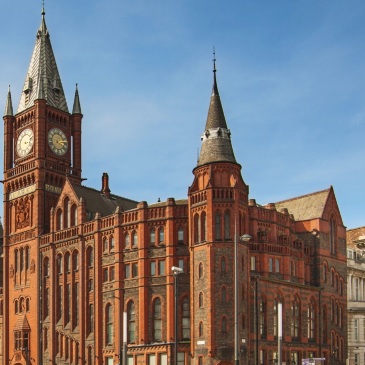
The University of Liverpool, established in 1881, is one of the six original red-brick universities and the UK’s first Sino-British university. Ranked in the top 1% of universities worldwide, it has produced nine Nobel Prize winners including Sir Ronald Ross in 1902, the first British Nobel laureate.
The University has a long history in medicine and medical imaging. Professor Lodge took the UK’s first surgical X-ray in 1896 and medical imaging remains a big topic here with over 100 researchers involved and funding from NIHR, EPSRC, BBSRC, MRC, the Wellcome and Leverhulme Trusts as well as other national and local charities. The University has one of the largest medical schools in the UK and direct links to Aintree University Hospital, Broadgreen Hospital, the new £335 million Royal Liverpool University Hospital which is due to be completed in April 2018, and the new over £100 million cancer hospital being built in addition to the Clatterbridge Cancer Centre. The University is home to many research centres focussed on medical imaging, image processing and analysis including the Centre for Research in Image Analysis (CRiA) and the Centre for Mathematical Imaging Techniques (CMIT). The new £6 million EPSRC Liverpool Centre for Mathematics in Healthcare (LCMH) aims to develop novel mathematical tools that address serious healthcare challenges, of which imaging is a major part. The Centre for Pre-clinical Imaging (CPI) focuses on non-invasive imaging in preclinical models with high field MRI, optical imaging, photo-acoustic imaging and ultrasound. The Magnetic Resonance and Image Analysis Research Centre (MARIARC) is a shared research facility in the Faculty of Health and Life Sciences which has expertise in 3 Tesla and 1.5 Tesla MRI scanning, functional MRI, diffusion tensor imaging and perfusion imaging. The NIHR Liverpool Pancreas Biomedical Research Unit (PBRU), dedicated to improving the management of patients with pancreatic digestive diseases, is the only NIHR funded specialist unit to research pancreatic and pancreatic cancer in the UK. The University is also a neighbour of the Liverpool School of Tropical Medicine, the first institution in the world dedicated to tropical diseases and home to many pioneering diagnostic and management techniques.
